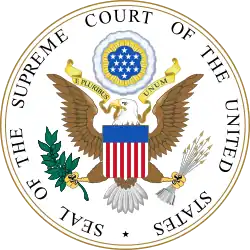United States v. Appalachian Electric Power Company
| United States v. Appalachian Electric Power Company | |
|---|---|
 | |
| Decided December 16, 1940 | |
| Full case name | United States v. Appalachian Electric Power Company |
| Citations | 311 U.S. 377 (more) |
| Holding | |
| A waterway that could be made available for navigation in interstate commerce with reasonable improvements is a navigable water of the United States. | |
| Court membership | |
| |
| Case opinions | |
| Majority | Reed |
| Concurrence | McReynolds |
| Dissent | Roberts |
| Hughes took no part in the consideration or decision of the case. | |
United States v. Appalachian Electric Power Company, 311 U.S. 377 (1940), was a United States Supreme Court case in which the court held that a waterway that could be made available for navigation in interstate commerce with reasonable improvements is a navigable water of the United States. Whether or not Congress has actually contemplated or approved such improvements to the waterway is irrelevant.[1][2]
References
External links
- Text of United States v. Appalachian Electric Power Company, 311 U.S. 377 (1940) is available from: Cornell Findlaw Justia
This article incorporates written opinion of a United States federal court. As a work of the U.S. federal government, the text is in the public domain.